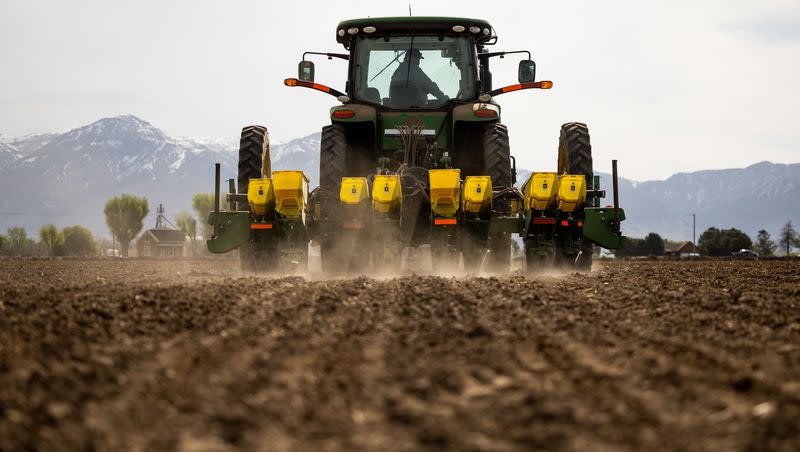Opinion: Are Utah farmers and ranchers doing their part to conserve water?

Benjamin Franklin once said, “When the well’s dry, we know the worth of water.”
Last fall, we all learned the worth of Utah’s water as we faced unprecedented drought. While we’ve been blessed with record snowfall and rain over the past several months, remembering the worth of water is essential if we want Utah to continue to flourish.
This has been the case for thousands of years. Utah’s earliest native inhabitants understood the worth of water as they built check dams and irrigation ditches to water their crops. The Latter-day Saint settlers understood the worth of water as they built a system of canals immediately upon their arrival in the Salt Lake Valley. And today, no one knows the worth of Utah’s water better than our farmers and ranchers.
Agriculture has long been a steward of our state water resources and an essential part of our economy. Twenty percent of Utah’s land is farm or rangeland, and when you follow the supply chain from the farm to the end consumer, the food and agriculture sector employs more than 20,000 Utahns and contributes over $2 billion annually to our state’s economy. Agriculture is key to Utah being one of the most diverse economies in the country, and it is important to remember that for many of our communities, agriculture is the economy. Farms and ranches also provide critical open space and wildlife habitat. Agriculture and the hardworking farmers and ranchers who are the caretakers of our land are a key part of what makes Utah, Utah.
Over the past several years, I have heard a wrongheaded claim that farmers and ranchers are to blame for Utah’s water issues because 79% of Utah’s water is used for agriculture.
I fundamentally disagree with this simplistic narrative.
First, it is important to understand what the statistics actually show. It is true that 79% of Utah’s water diversions are used for agriculture, but diversions only account for 5% of Utah’s total water use. The vast majority of water in the state is consumed by natural systems such as forests, lakes and wetlands and by evaporation. Additionally, not all water diverted for agriculture is consumed in the process of growing crops; approximately 35% of that water is returned to surface and groundwater systems. Finally, the portion of water diverted for agriculture varies greatly by region, For example, in the Jordan River basin, only 11% of diversions go to agriculture with the remaining 89% going to municipal and industrial uses.
I don’t share those statistics to diminish the challenge we face as a state when it comes to water. Only a year ago, 98% of Utah faced severe drought, and while that number has dropped to nearly 0% today, we are still a semi-arid state and the time is not far off where we will be staring down those same problems. Water conservation remains essential to our future and no one is doing more than our agriculture community to wisely conserve, innovate and look to the future.
Related
Opinion: We are out of extreme drought, but not out of trouble
Too much water hits farming hard, Rich County cattle evacuated as Bear River rises
In 2021, farmers and ranchers saw their water supply cut by 70%-75%. I don’t know about you, but despite the drought, I didn’t notice my kitchen faucet flowing at 25% capacity. This is because farmers are the first to sacrifice water to adjust for drought conditions. In 2022, farmers and ranchers also invested millions of dollars in hundreds of water optimization projects across the state to install more effective irrigation systems. These investments were matched by $70 million worth of grants from the Legislature and are projected to result in over 174,000 acre-feet of water saved (enough water supply for 348,000 homes). The success of this program led to an additional $200 million in funding from the legislature for 2023, which will be matched 1 to 1 by the farmers and ranchers who are eager to do their part to save water.
Utah is fortunate to have a state full of people, whether they be farmers, financiers or firefighters, who are committed to water conservation. Utahns across the state are coming together to face our water challenges. Elected officials and the public have taken significant action to save the Great Salt Lake. We have made wise investments in our water infrastructure to get the most from our fluctuating water supply. Residents are making water-wise decisions by “flipping the strip” and finding alternatives to thirsty lawns. And our farmers and ranchers are certainly doing their part.
Learning the worth of our water is a hard lesson, but the people of Utah give us good reason to be optimistic about Utah’s water future — despite our significant challenges. As we continue to work together in the Utah way, we can make every drop of water count.
Brad Wilson is the Speaker of the Utah House of Representatives.

